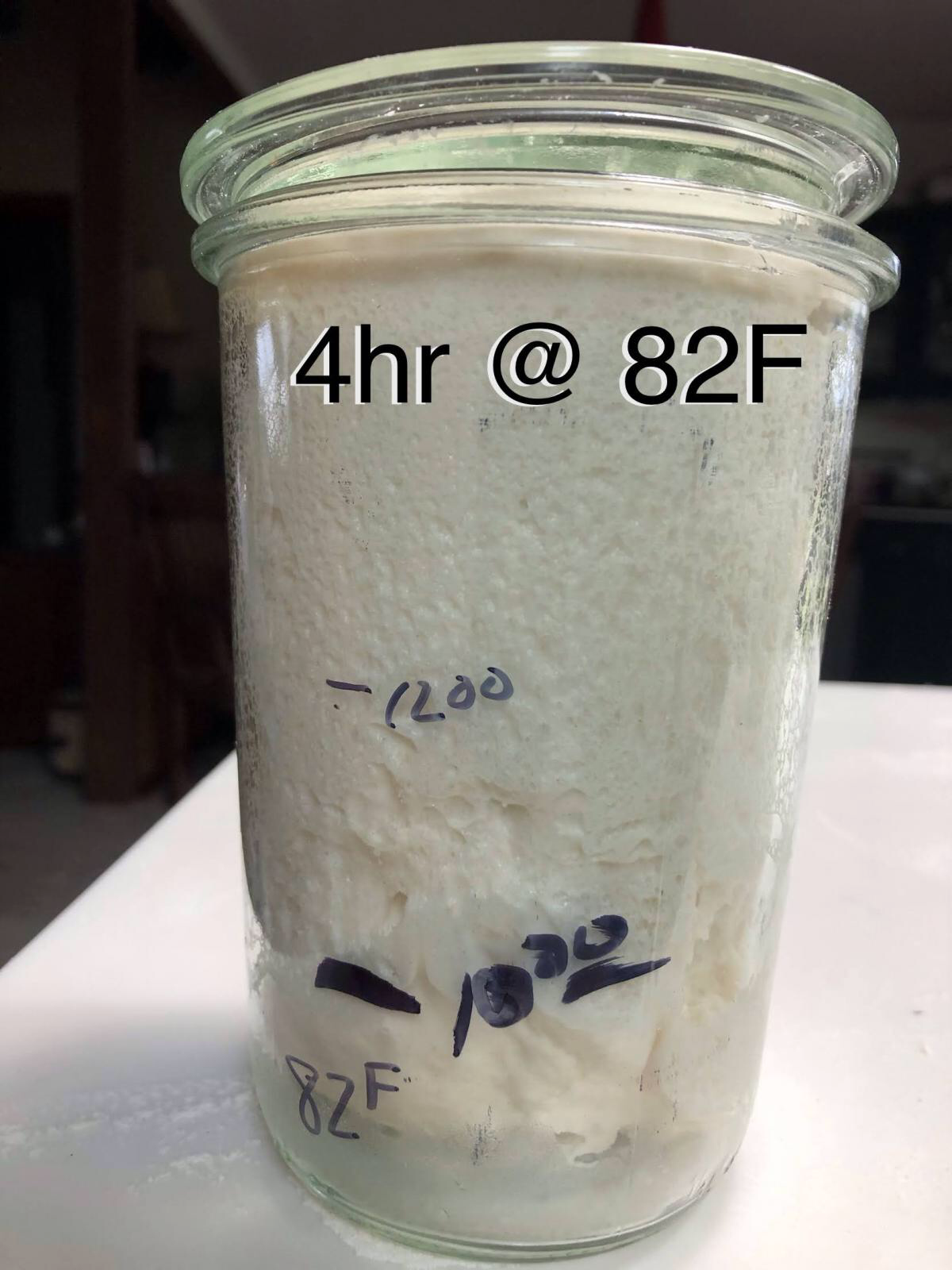Nov. 27, 2020.
The goal of this bake is to use no pre-milled flour, just soaked whole berries that have been blended in a Vitamix blender. Add-ins are then used to get the hydration right.
This time I weighed most things. I forgot to weigh the approximately 1 tbsp starter. Guessing it to be 19.5 grams.
I started with 225 g of whole berry hard white spring wheat, Prairie Gold, and soaked it in what looked like enough water for 17 hours. I exchanged the soak water during this period.
I weighed the berries and water at the end of the soak, and figured I put 284 grams of water and 225 grams of wheat in the blender.
Part way through blending, it looked like it needed more water to fully blend, so I added 22 grams of water for a total of 306.
It blended into a paste. I gave it an extra 30 seconds at high speed to break up the small bits. The paste got a bit warm.
Upon scraping it out of the blender, I could see strands, so it developed gluten.
Weighed the bowl of paste, and figured I "lost" 25 grams of paste/dough that I could not scrape out of the blender container. I did not try to flush the residue out of the blender container using water, as that may have necessitated adding flour to the thinner paste.
Using a silicone scraper, folded in 35 grams of whole dry chia seed, 15 grams of dry uncooked old fashioned rolled oats and 15 grams of dry uncooked quick 1 minute oats (not instant).
Folded in 4.5 grams of salt.
Folded in 1/8 tsp instant dry yeast and 19.5 grams of cold starter, 100% hydration, made with Gold Medal Bread Flour, last refreshed yesterday afternoon.
The dough was a little rubbery and bouncy. Yup, there's gluten! Same behavior as yesterday's second bake, only a little more so -- so that one had gluten formed in the blender too, but I did not realize it.
After mixing in the add-ins, I realized that I didn't need to add any flour. Woo hoo!
At the 40 minute mark, the rolled oats are still lumpy. So in the future, if I don't want oat lumps, I'll use just the quick oats, not the thicker un-cut old fashioned variety.
Baker's percentages:
- 306 / 225 = 136% hydration, not counting add-ins.
- 306 / 290 = 105.5% hydration including add-ins.
- (19.5 / 2) / ( 225 + (19.5/2) ) = 4.1% prefermented flour.
- 35 / 225 = 15.5% dry chia.
- 30 / 225 = 13.3 % dry rolled oats.
Baked with lid on, at 425 F for 20 minutes. Then with lid off, at 425 F for 23 minutes. Internal temp 209.5 F.


























